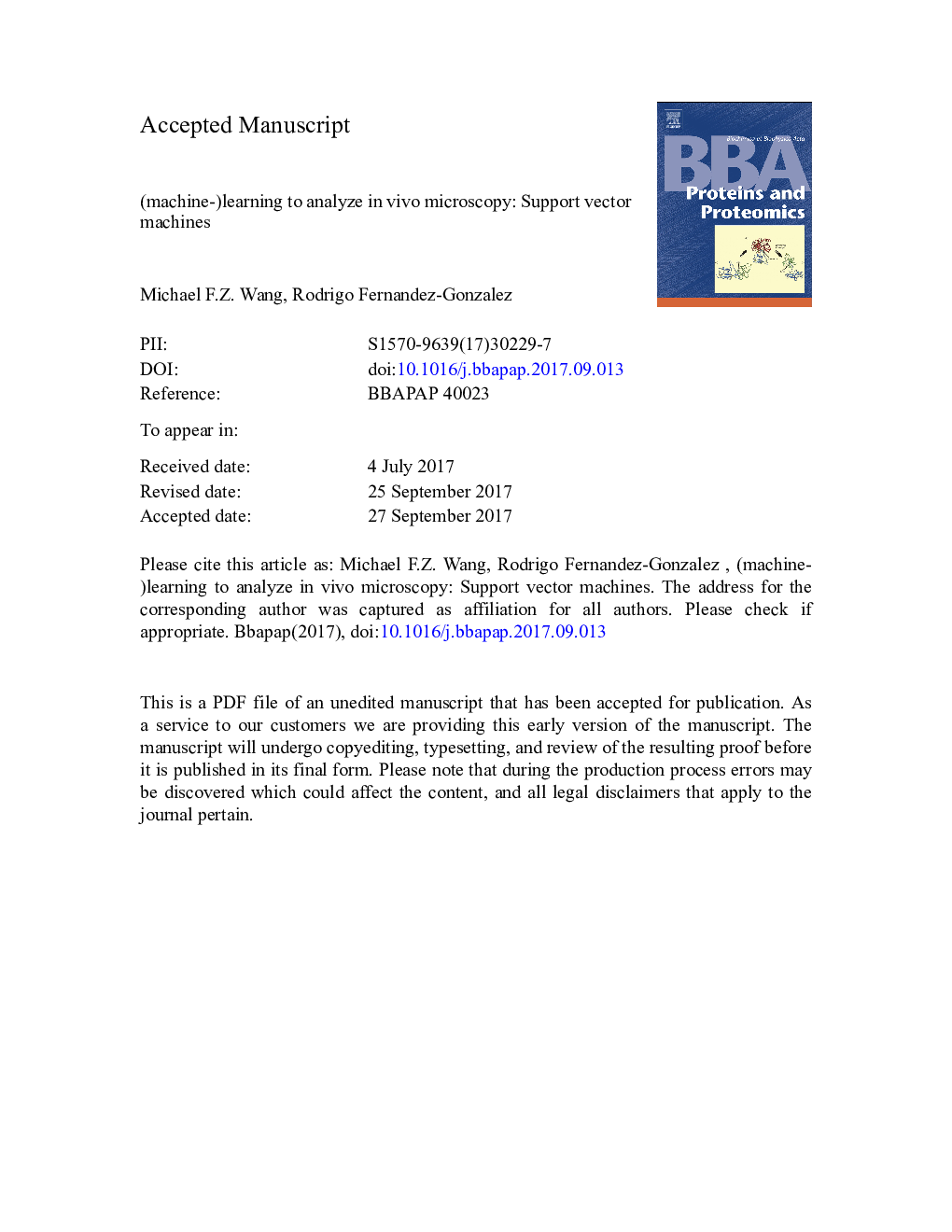| Article ID | Journal | Published Year | Pages | File Type |
|---|---|---|---|---|
| 7560832 | Biochimica et Biophysica Acta (BBA) - Proteins and Proteomics | 2017 | 39 Pages |
Abstract
The development of new microscopy techniques for super-resolved, long-term monitoring of cellular and subcellular dynamics in living organisms is revealing new fundamental aspects of tissue development and repair. However, new microscopy approaches present several challenges. In addition to unprecedented requirements for data storage, the analysis of high resolution, time-lapse images is too complex to be done manually. Machine learning techniques are ideally suited for the (semi-)automated analysis of multidimensional image data. In particular, support vector machines (SVMs), have emerged as an efficient method to analyze microscopy images obtained from animals. Here, we discuss the use of SVMs to analyze in vivo microscopy data. We introduce the mathematical framework behind SVMs, and we describe the metrics used by SVMs and other machine learning approaches to classify image data. We discuss the influence of different SVM parameters in the context of an algorithm for cell segmentation and tracking. Finally, we describe how the application of SVMs has been critical to study protein localization in yeast screens, for lineage tracing in C. elegans, or to determine the developmental stage of Drosophila embryos to investigate gene expression dynamics. We propose that SVMs will become central tools in the analysis of the complex image data that novel microscopy modalities have made possible. This article is part of a Special Issue entitled: Biophysics in Canada, edited by Lewis Kay, John Baenziger, Albert Berghuis and Peter Tieleman.
Related Topics
Physical Sciences and Engineering
Chemistry
Analytical Chemistry
Authors
Michael F.Z. Wang, Rodrigo Fernandez-Gonzalez,
